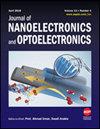Design and Performance Analysis of Automobile Headlamp Based on Light-Emitting Diode
IF 0.6
4区 工程技术
Q4 ENGINEERING, ELECTRICAL & ELECTRONIC
引用次数: 0
Abstract
As a vital component of the automobile headlamp, its design is not only related to power loss but also affects the appearance of the automobile. Most importantly, its design directly affects the night lighting effect and driving safety. Compared with the traditional headlamp light source, light-emitting diode (LED) light source has the advantages of long lifespan, small size, fast response, flexible design, flexible control, and so on. Based on this, this study designs high-power white LED automobile headlamps, adopts the commonly used reflector design technology, and puts forward the design scheme of the lighting group system. This scheme relies on a reflector for light distribution, without needing a baffle or lens with light distribution patterns. The optical design software TracePro and the three-dimensional design software PROE are used to simulate and design the reflectors of low and high beams, respectively. The simulation results of the reflector of the low beam show that more than 490000 rays of light reach the filament shield, with a light utilization rate of over 95%. The horizontal cut-off line and 15° light and dark cut-off lines are clearly visible, and the front window material is closed. Considering this factor, the illumination distribution of the low beam meets relevant national regulations. The high beam reflector simulation results reveal that over 960000 light rays reach the filament shield, with a more than 95% light utilization rate. The light spot is symmetrical. If the front window material is polycarbonate and not coated, the absorption and scattering of light are ignored, and the transmittance of the beam through the two optical surfaces achieves 90%.基于发光二极管的汽车前大灯设计与性能分析
作为汽车前大灯的重要组成部分,它的设计不仅关系到功率损耗,还会影响汽车的外观。最重要的是,它的设计直接影响到夜间照明效果和行车安全。与传统大灯光源相比,发光二极管(LED)光源具有寿命长、体积小、响应快、设计灵活、控制灵活等优点。基于此,本研究设计了大功率白光 LED 汽车前大灯,采用常用的反射器设计技术,提出了灯组系统的设计方案。该方案依靠反射器进行配光,不需要具有配光模式的挡板或透镜。光学设计软件 TracePro 和三维设计软件 PROE 分别用于模拟和设计近光灯和远光灯的反射器。低光束反射器的模拟结果显示,有超过 490000 条光线到达灯丝屏蔽,光利用率超过 95%。水平截止线和 15°明暗截止线清晰可见,前窗材料封闭。考虑到这一因素,近光灯的照度分布符合国家相关规定。远光灯反射器模拟结果显示,有超过 960000 条光线到达灯丝防护罩,光线利用率超过 95%。光斑对称。如果前窗材料是聚碳酸酯且没有涂层,则光的吸收和散射被忽略,光束通过两个光学表面的透射率达到 90%。
本文章由计算机程序翻译,如有差异,请以英文原文为准。
求助全文
约1分钟内获得全文
求助全文
来源期刊

Journal of Nanoelectronics and Optoelectronics
工程技术-工程:电子与电气
自引率
16.70%
发文量
48
审稿时长
12.5 months
 求助内容:
求助内容: 应助结果提醒方式:
应助结果提醒方式:


